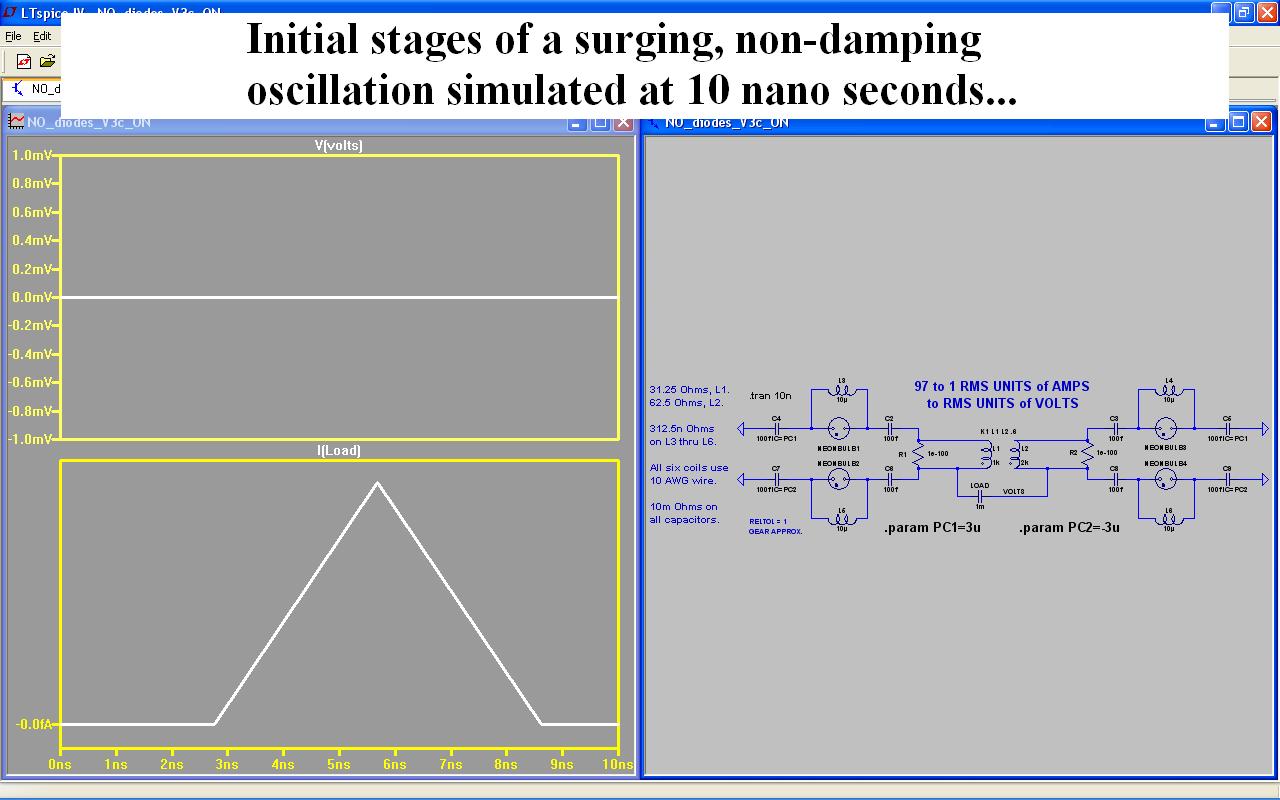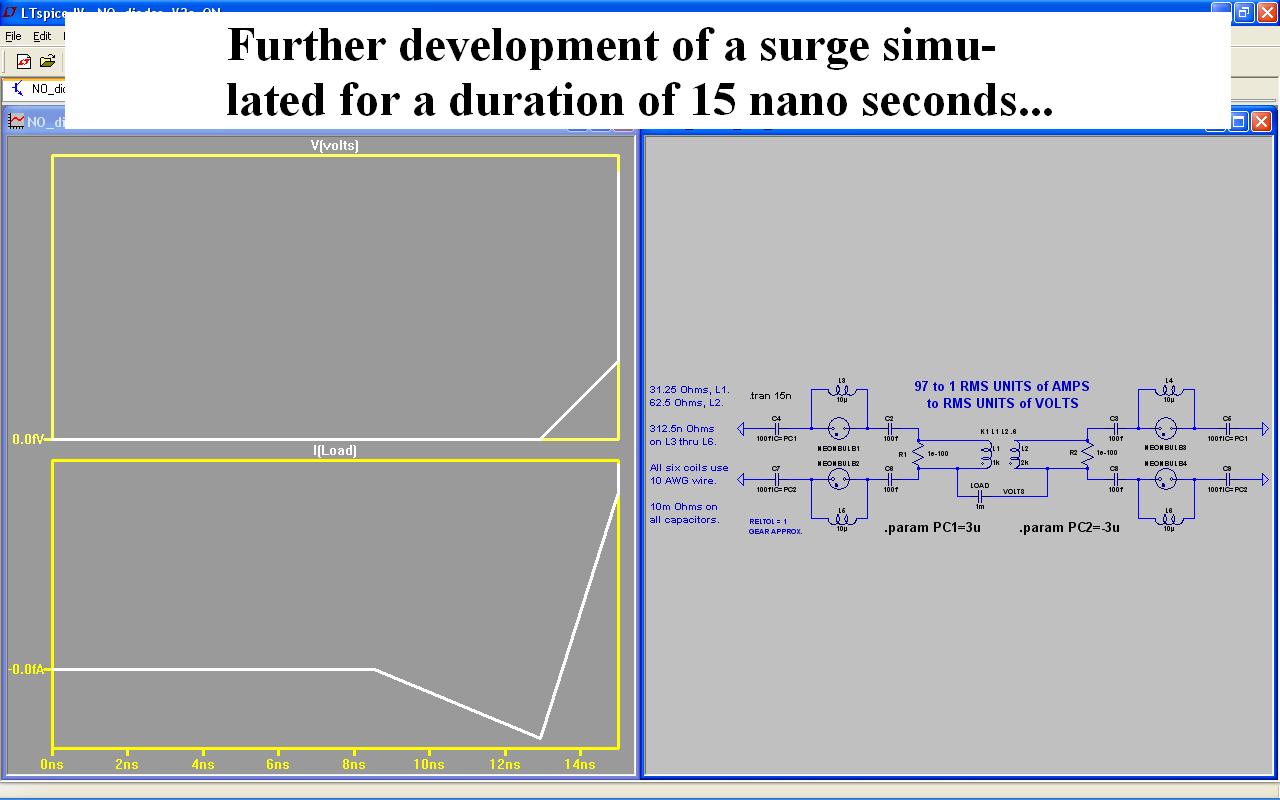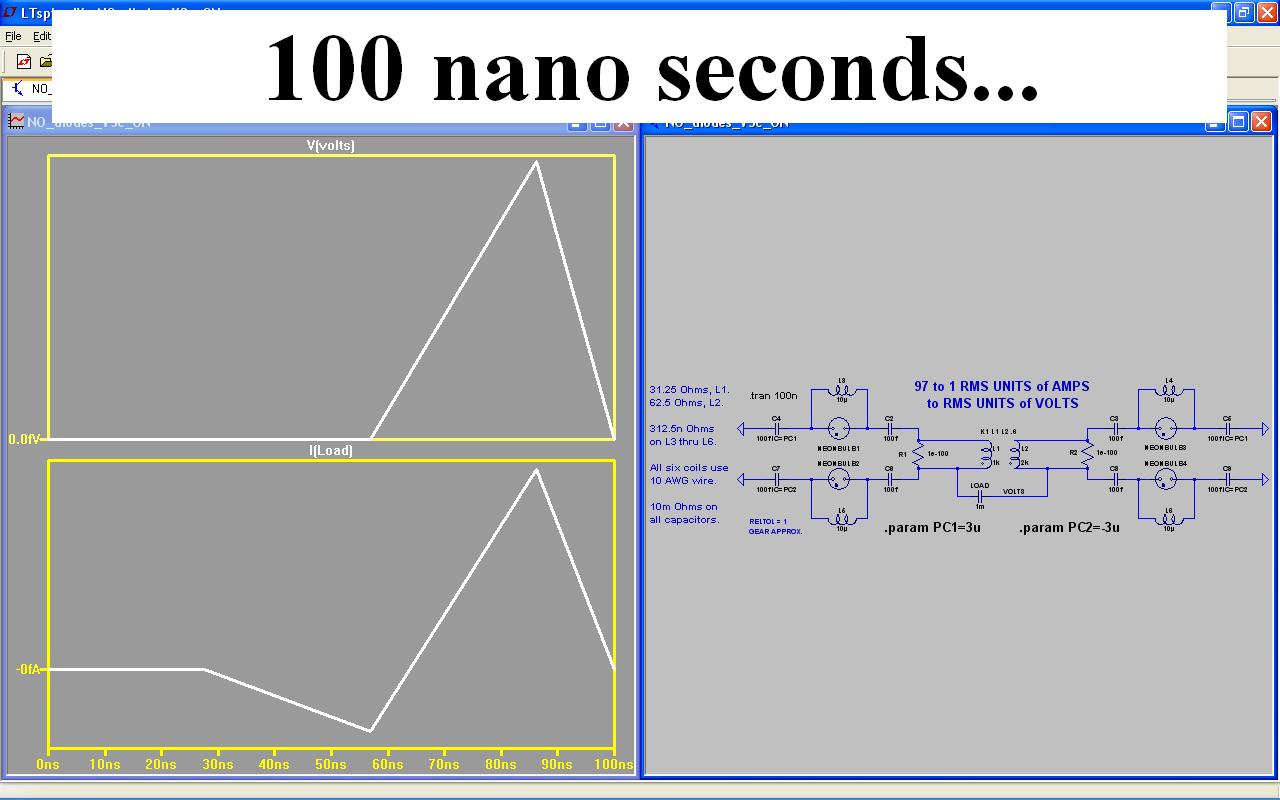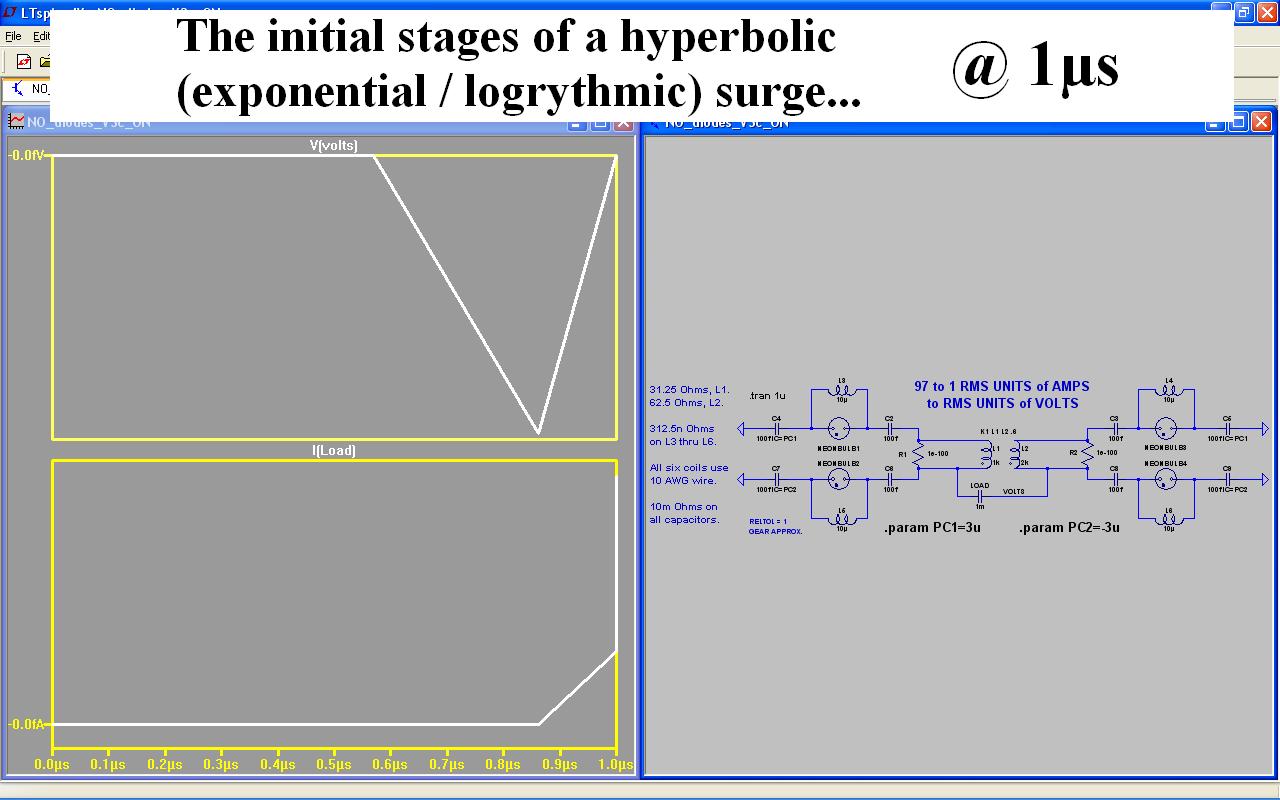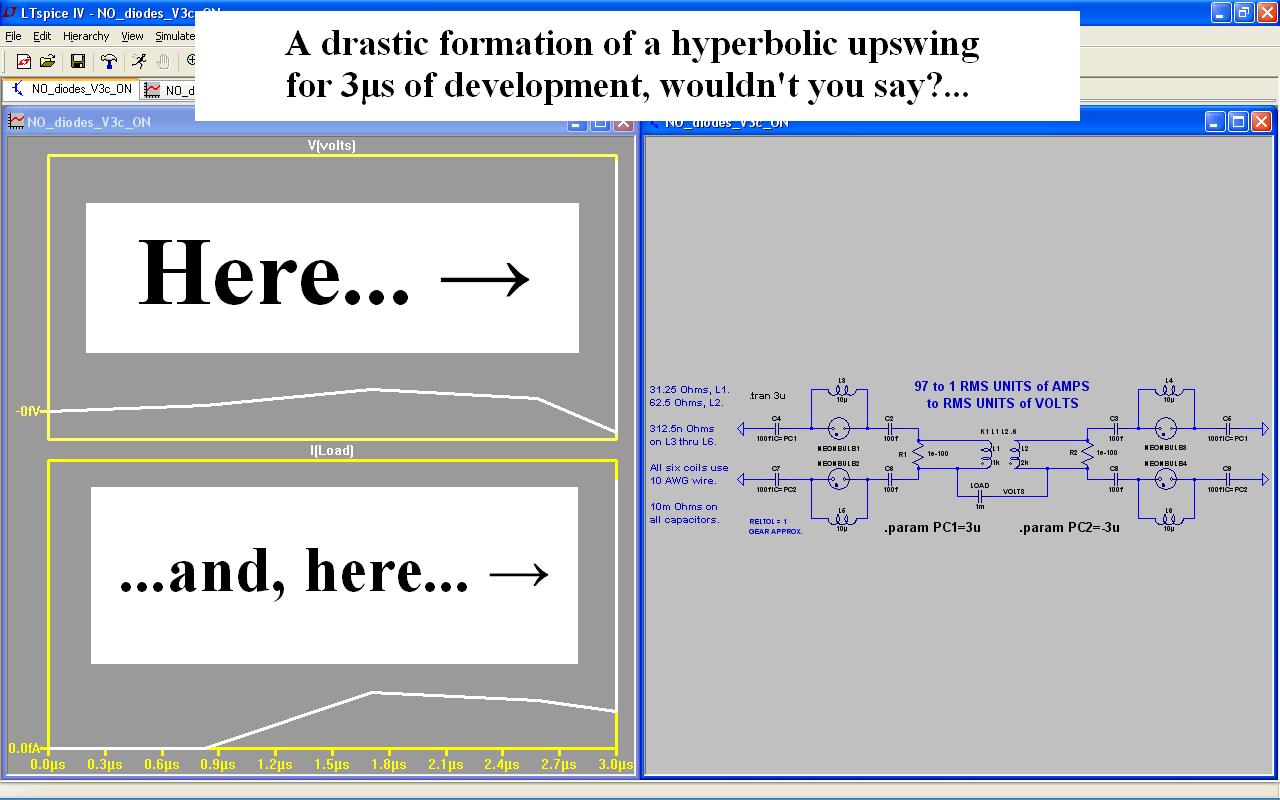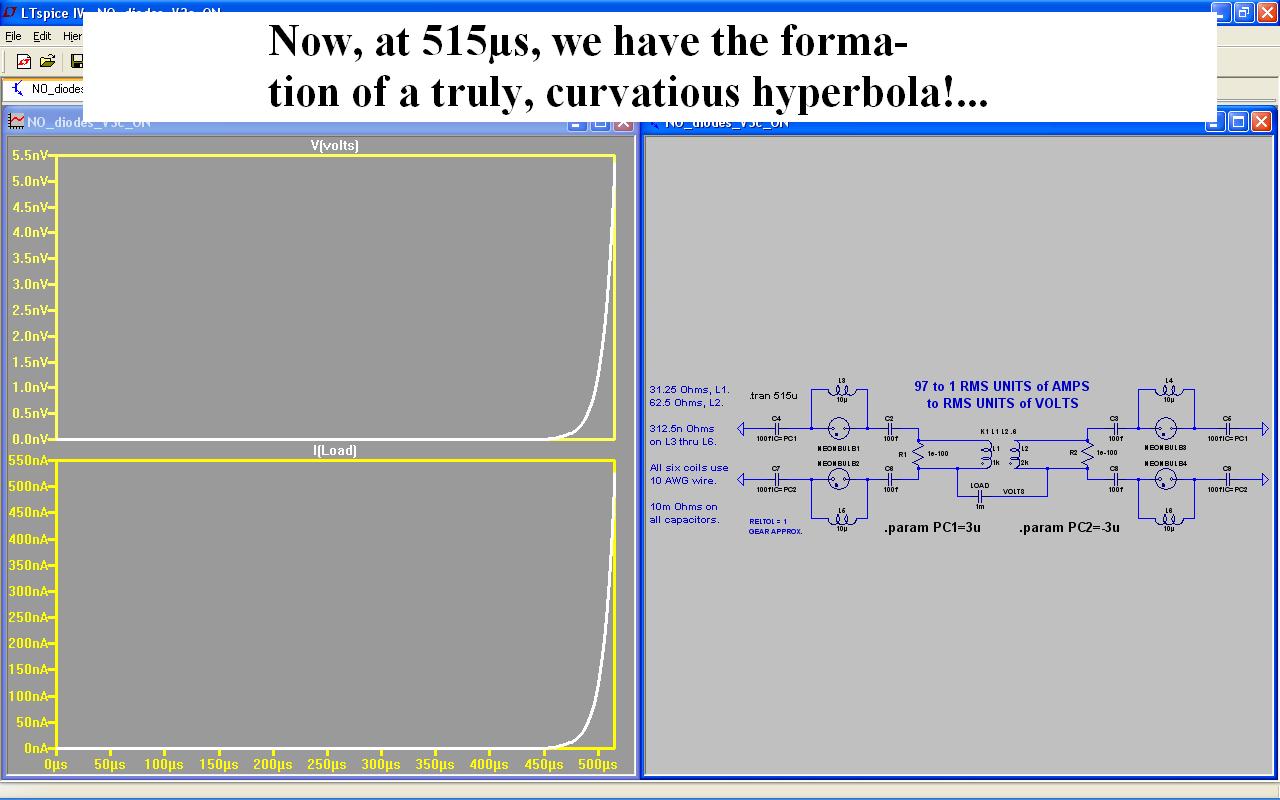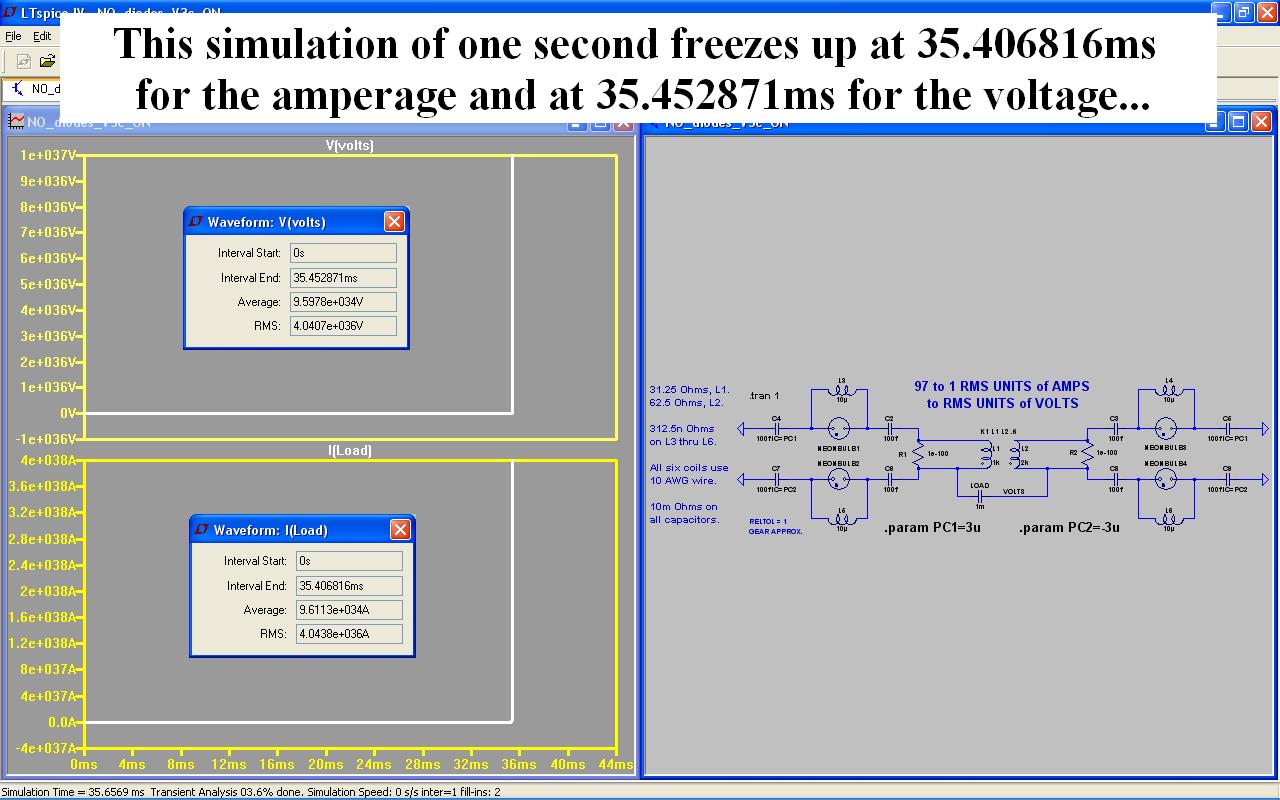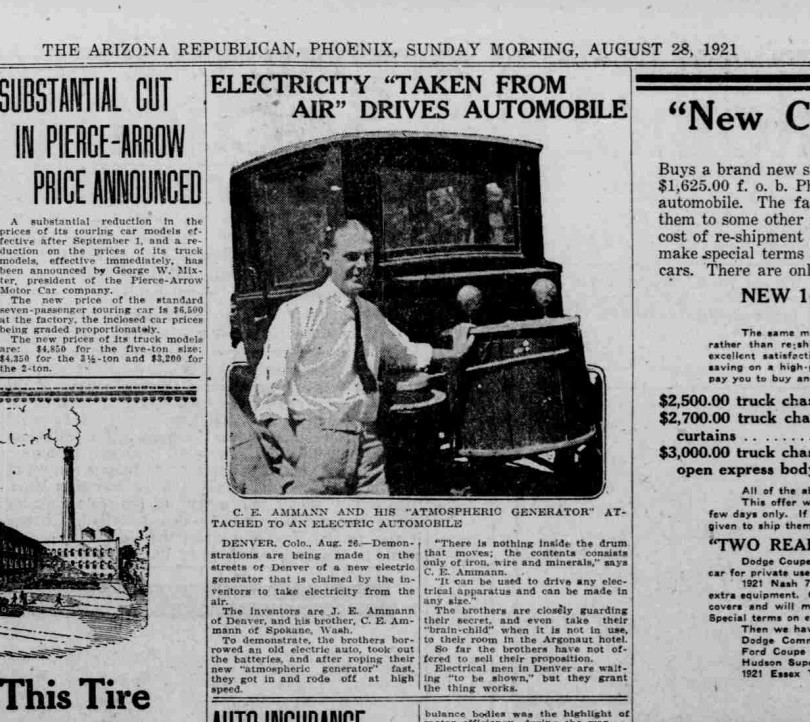
This photo comes courtesy of Boguslaw on Energetic Forum.
We may never know...

This
photo comes courtesy of Boguslaw
on Energetic Forum.
But at least we may conjecture something similar...?
Perhaps, this was it?...
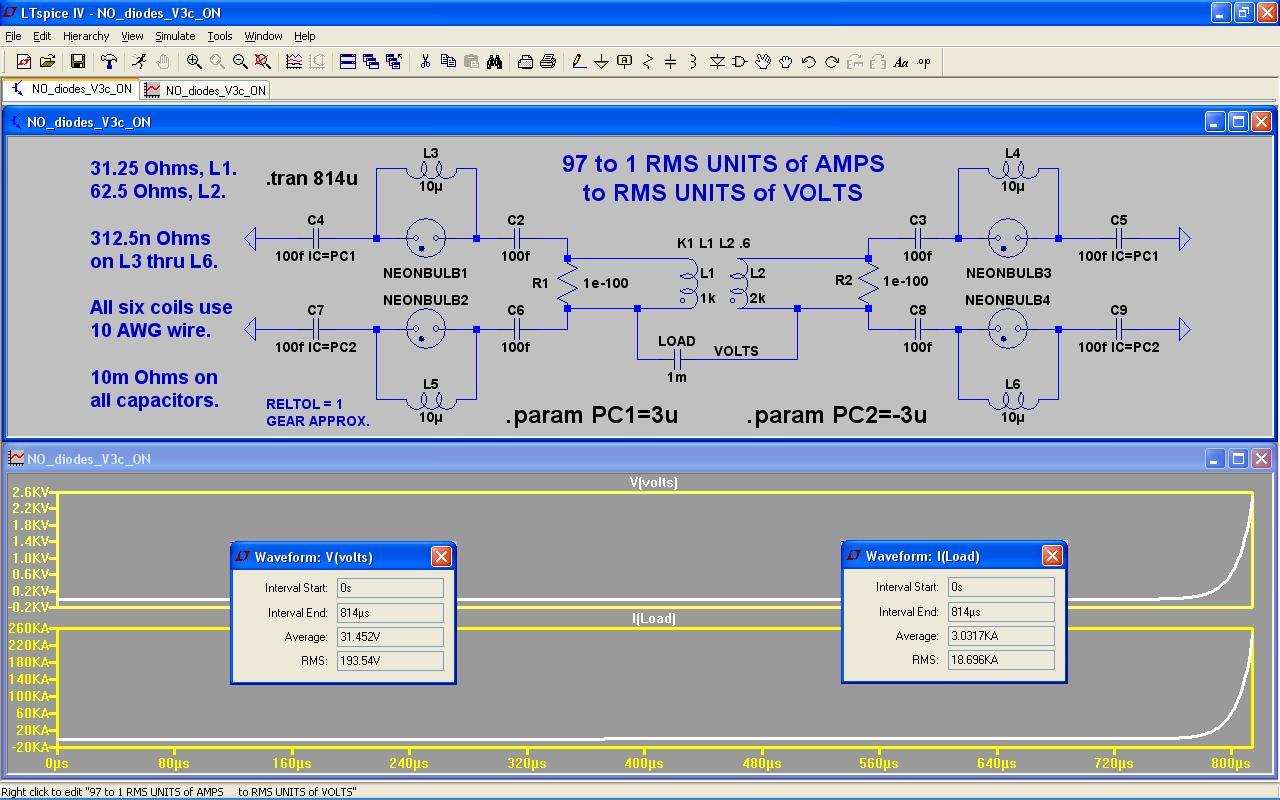
Reactive Power is Potential Energy and, thus, is not conservable under the auspices of thermodynamics. This design, above, requires a stimulating input far less than whatever is expected to power an EV in order to prevent the suppression of its reactive potential for escalating a surge towards infinite oblivion.
Thus, instead of an input of 345 volts expected to power a RAV4 EV from 2001 (delivered by the RAV4 EV's pack of two dozen, 12 volt, NiMH batteries), this device is stimulated by two precharged capacitors – C4 and C5 – of a mere 3µV, each, representing a pair of aerial inputs from its two grounds. This miniscule input is comparable to a meter-long whip antenna intended to power a crystal radio set from the 1920s.
The use of anything greater than mere microvolts would risk suppressing the reactivity of this design and demand a conventional approach towards satisfying the needs of modern electric vehicles which utilize brute force (of considerable voltage) to accomplish their task at a considerable expense of their batteries' capacity to store power.
This design, above, sidesteps this conventional wisdom in favor of gambling that reactive power is sufficient enough to accommodate all of our needs for electricity using whatever energy is readily available within our immediate vicinity.
And since power factor correction is well-known within the engineering community, reactive power should be everyone's first choice for conserving our limited resources.
The fact that one of the Ammann brothers, tasked with the desire to bring their invention to market by driving their EV to the United States Patent Office, was promptly arrested for “stealing energy from the grid”, is ample evidence of the proficiency of their design to warrant further attention at the very least!
This is because reactive power is a double-edged sword...
On the one hand, reactive power can alter the transmission of energy (through a circuit or subcircuit) by any one or more of its three methods available to it via: capacitive reactance, inductive reactance or time (such as: frequency and phase relations are two temporal examples) giving the illusion that energy has become manufactured out of thin air.
And since reactive impedance equates capacitive reactance with capacitance and also equates inductive reactance with inductance, thus, any reaction by coils and caps to the stimulating presence of miniscule quantities of kinetic energy may induce a surge of reactive power (via the manipulation of time) accelerating the frequency of reactance and inducing a spiraling phenomenon of exponential growth of kinetic amplitude (known among electrical engineers as a “non-damping oscillation” of “pure resonance”).
I see this all the time within electronic simulators in which mathematical relationships are the only reality governing the simulation of electrodynamics. Unfortunately, it doesn't stop there...
Simulators often include “finishing touches” intended to thwart free energy designs by yielding error messages, such as: “matrix is singular”, “convergence error” and “time-step is too small for transient analysis”. All of these convey the same message, that: a surge is escalating towards infinite oblivion causing the peaks and the valleys of an oscillation to separate further and further apart in amplitude and often with a peak or valley escalating away from virtual midline faster than the other peak or valley causing a hyperbolic curvature to form of an oscillating waveform accelerating at a rate of base ten.
This “virtual base of acceleration” is comparable to the “parametric base of two” which actually occurs in our physical world within the domain of “parametric excitation.”
This hyperbolic escalation is the direct result of the self-fulfilling, electrical impedance equivalencies noted, above.
The field surrounding electrical components is all-important. It powers the circuit; not the components, themselves.
Physical components merely provide for the initiation of their respective (di-)electric and magnetic fields, yet cannot guarantee the outcome will be according to their specifications.
This is known as: mutual inductance and mutual capacitance in which one component is free to modify the joint field held between itself and any other contributing influences (such as other, similar, components).
Thus, capacitors can vary the field generated by other capacitors located nearby. And likewise, inductors may do the same to other inductors via the coupled field mutually shared between them.
This amounts to the potentiality of “parametric variation” via the dynamics of mutuality shared among similar components. And parametric amplification is a well-known byproduct of this dynamic occurring within audio amplification technology.
Secondly, the other edge-of-the-sword to electrical reactance's dual-nature is...
...whenever any substantial quantity of kinetic energy is available, nearby. In these instances, reactive power has the distinct tendency of grabbing this kinetic energy (residing within the power grid for instance) with a tenacity rivaling young college students (stealing WiFi from local cable lines). This makes reactive power a direct threat to the conventional methods of energy management which are vulnerable to the balancing forces of Nature endeavoring to satisfy any imbalance inherent within reactive power, namely: over-reactivity lacking the stabilizing influence of kinetics. Thus, in the absence of kinetics (using voltage sources of conventional amplitude), reactance will substitute with its own violent tendency for over-reacting to the paucity of kinetic energy and surge out-of-control if adequate controls are not implemented ahead-of-time.
...if we isolate the development of new communities from the infrastructure of the power grid and from the damning influence of economics and politicized science.
Robots (artificially intelligent simulators) do not know what the Laws of Physics are, nor do they recognize the existence of ephemeral “aether” or “radiant energy.” If this lack of reliability is good enough for electrical engineers to use them for most of their preliminary planning, then it's good enough for me to study their software's structure and behavior to get a fairly accurate training in electrodynamic theory minus the B.S.!
I don't care if we should lose our military and economic advantage if this knowledge should leak out and fertilize young minds. Amen!
I thank Eric Dollard and many other scientists for my appreciation of what simulators present to my awareness. Eric has worked for the United States Navy (when he was first hired at the age of 16 years!) on several occasions as well as for private interests in the perfection of his craft.
He has a thorough and well-grounded engineering background having begun his study as a youth reading his father's books (while the rest of us were reading children's books) which supplemented his many experiments conducted in the family garage with assistance from his school chums.
